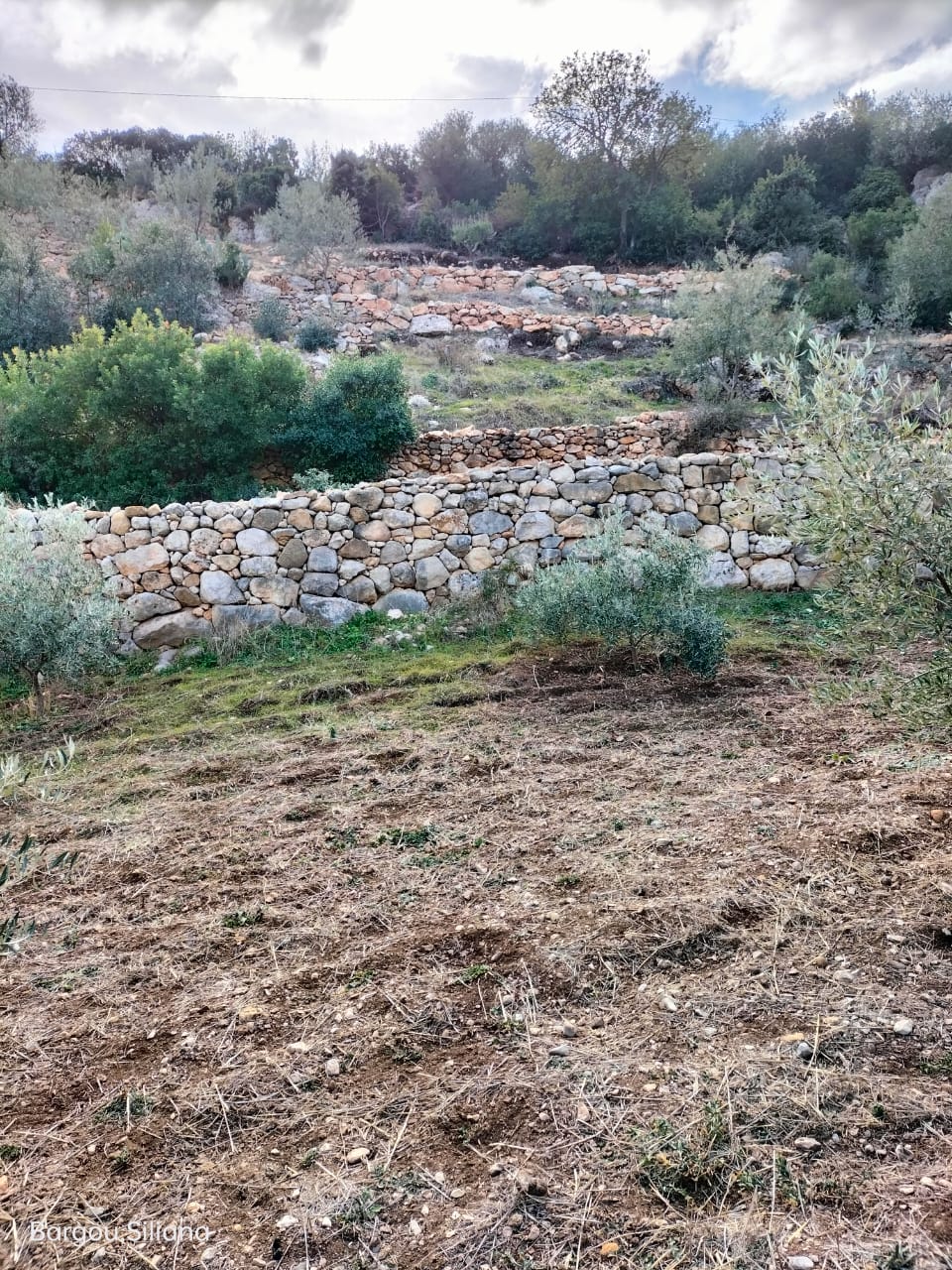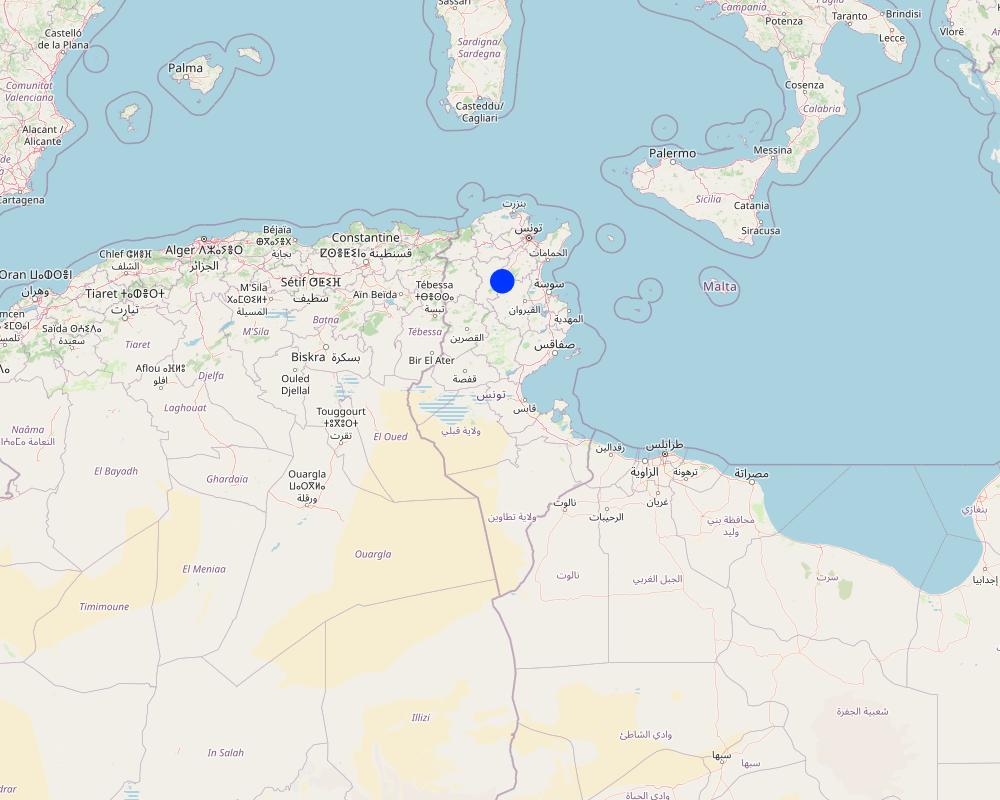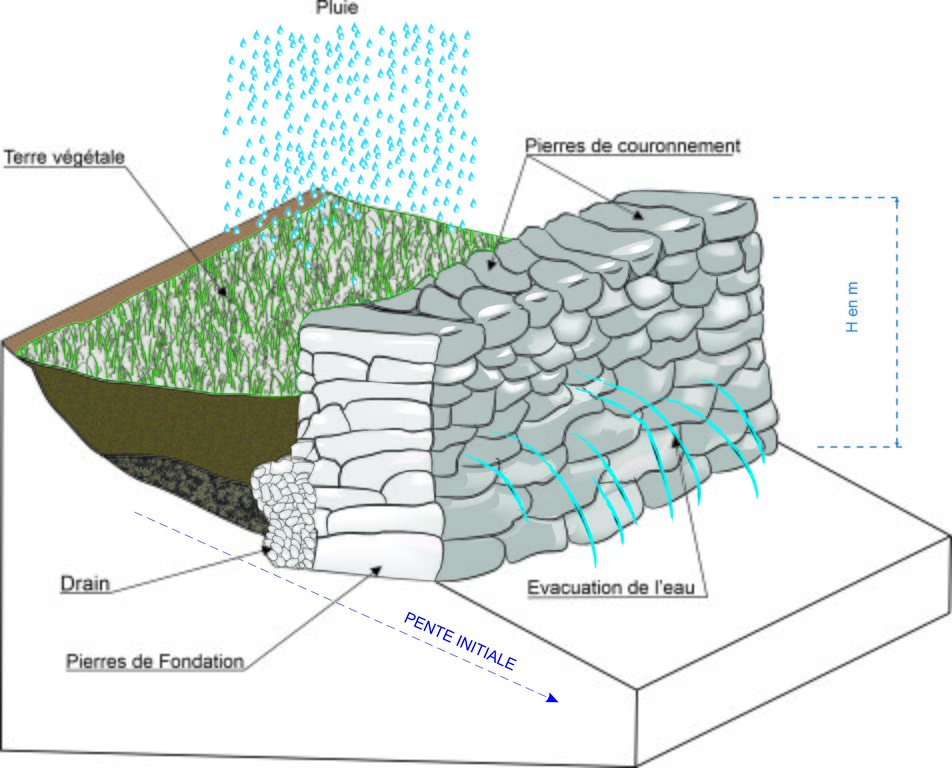Dry Stone Walls [Tunisia]
- Creation:
- Update:
- Compiler: Wafa Saidi
- Editors: Siagbé Golli, Faouzi Harrouchi, faouzi BATTI, Fatma Maaloul, Tabitha Nekesa, Ahmadou Gaye
- Reviewers: William Critchley, Rima Mekdaschi Studer
جدار حجري
technologies_6666 - Tunisia
View sections
Expand all Collapse all1. General information
1.2 Contact details of resource persons and institutions involved in the assessment and documentation of the Technology
Key resource person(s)
SLM specialist:
Dridi Lassad
Arrondissement Conservation des Eaux et des Sols, Commissariats Régionaux au Développement Agricole Siliana
Tunisia
SLM specialist:
Dridi Lassad
Arrondissement Conservation des Eaux et des Sols, Commissariats Régionaux au Développement Agricole Siliana
Tunisia
Name of project which facilitated the documentation/ evaluation of the Technology (if relevant)
Soil protection and rehabilitation for food security (ProSo(i)l)Name of the institution(s) which facilitated the documentation/ evaluation of the Technology (if relevant)
Direction Générale de l’Amenagement et de Conservation des Terres Agricoles (DG/ACTA) - TunisiaName of the institution(s) which facilitated the documentation/ evaluation of the Technology (if relevant)
GIZ Tunisia (GIZ Tunisia) - Tunisia1.3 Conditions regarding the use of data documented through WOCAT
The compiler and key resource person(s) accept the conditions regarding the use of data documented through WOCAT:
Yes
1.4 Declaration on sustainability of the described Technology
Is the Technology described here problematic with regard to land degradation, so that it cannot be declared a sustainable land management technology?
No
1.5 Reference to Questionnaire(s) on SLM Approaches (documented using WOCAT)
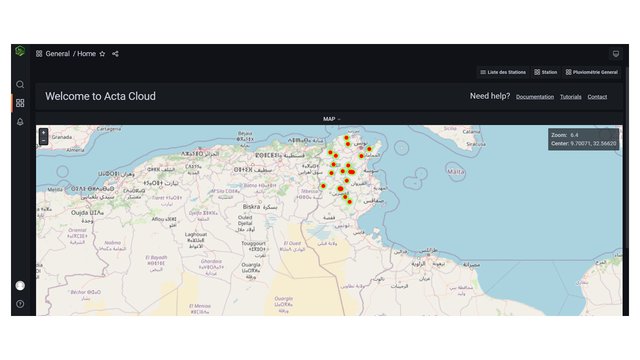
Territorial Natural Resource Management Observatory [Tunisia]
A territorial natural resources management observatory is a scientific, technical and institutional system set up in a given area to observe, monitor and improve knowledge.
- Compiler: Wafa Saidi
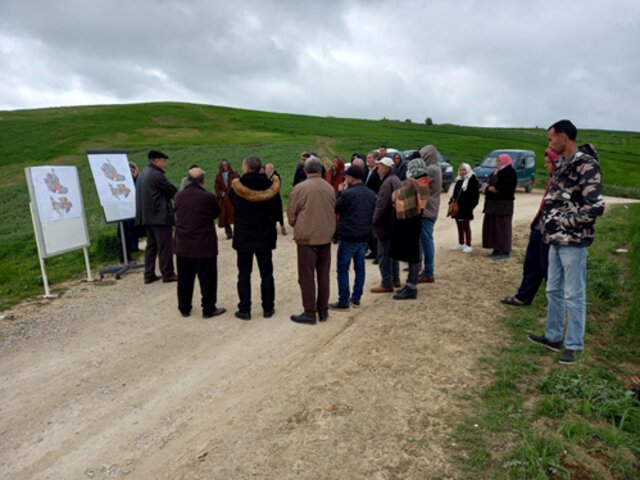
Integrated Territorial Planning and Development Project (PADIT) [Tunisia]
The PADIT approach comprises a cross-cutting participatory methodology to rural development, rallying various stakeholders around a project, within a location, to identify the main economic areas of the rural community concerned, and draw up a prioritized list of actions to strengthen and support development efforts in their location.
- Compiler: Wafa Saidi
2. Description of the SLM Technology
2.1 Short description of the Technology
Definition of the Technology:
Dry stone walls are durable landscaping structures created by arranging stones to construct small walls (without cement or plaster) either following contour lines or approximately
perpendicular to the slope.
2.2 Detailed description of the Technology
Description:
Dry stone walls are built by stacking stones without the use of mortar or concrete. Stones are carefully positioned in a specific pattern to create a stable, durable wall. They either follow contour lines or are laid out approximately perpendicular to the slope. Some common features and elements of dry stone walls include the following:
- the stones used to build the wall are of varying sizes and shapes, with larger stones placed at the bottom and smaller stones on top;
- the wall is built on a foundation of large stones or rocks buried in the ground;
- stones are carefully selected and placed to fit tightly together, ensuring stability and preventing soil erosion;
- the wall can be straight or curved, depending on the terrain and the wall's purpose.
These walls are commonly found in rural areas with annual rainfall exceeding 400 mm, on stony soils with medium to steep slopes and deep soils. Dry stone walls are an effective way of reducing soil erosion and improving water management in hilly and mountainous areas, creating terraces with beds that facilitate farming.
The installation and maintenance of dry stone walls require skilled labour and specialized knowledge.
The steps involved in erecting a drystone wall are as follows:
- site preparation: the area must be cleared of all vegetation and debris;
- foundation preparation: the foundation should be 30 cm to 1 m wide and slightly sloped inwards to ensure stability;
- wall construction: with larger stones at the bottom and smaller stones at the top, the stones are tightly stacked together;
- drainage: to prevent water from accumulating behind the wall and causing damage, drainage channels must be created in the wall.
This technology removes stones from plots, holds soil in place, prevents erosion, preserves soil fertility, enhances biodiversity, creates jobs and supports local economies.
Farmers generally appreciate these advantages of dry stone walls. However, some may find them difficult to build and maintain, and may prefer other types of water and soil conservation structures. In addition, the use of dry-stone walls is limited by the availability of suitable stones and skilled labour in certain regions.
2.3 Photos of the Technology
2.5 Country/ region/ locations where the Technology has been applied and which are covered by this assessment
Country:
Tunisia
Region/ State/ Province:
Siliana
Further specification of location:
Bargou
Specify the spread of the Technology:
- evenly spread over an area
If precise area is not known, indicate approximate area covered:
- 100-1,000 km2
Is/are the technology site(s) located in a permanently protected area?
No
Map
×2.6 Date of implementation
Indicate year of implementation:
1992
2.7 Introduction of the Technology
Specify how the Technology was introduced:
- as part of a traditional system (> 50 years)
Comments (type of project, etc.):
This is a living tradition.
3. Classification of the SLM Technology
3.1 Main purpose(s) of the Technology
- improve production
- reduce, prevent, restore land degradation
- reduce risk of disasters
- create beneficial economic impact
3.2 Current land use type(s) where the Technology is applied
Land use mixed within the same land unit:
No

Cropland
- Annual cropping
- Tree and shrub cropping
Annual cropping - Specify crops:
- vegetables - root vegetables (carrots, onions, beet, other)
Tree and shrub cropping - Specify crops:
- olive
Number of growing seasons per year:
- 1
Is intercropping practiced?
No
Is crop rotation practiced?
No
3.3 Has land use changed due to the implementation of the Technology?
Has land use changed due to the implementation of the Technology?
- Yes (Please fill out the questions below with regard to the land use before implementation of the Technology)
Land use mixed within the same land unit:
Yes

Cropland
- Tree and shrub cropping
Tree and shrub cropping - Specify crops:
- olive
Is intercropping practiced?
No
Is crop rotation practiced?
No
3.4 Water supply
Water supply for the land on which the Technology is applied:
- rainfed
3.5 SLM group to which the Technology belongs
- integrated soil fertility management
- cross-slope measure
3.6 SLM measures comprising the Technology

structural measures
- S2: Bunds, banks
3.7 Main types of land degradation addressed by the Technology

soil erosion by water
- Wt: loss of topsoil/ surface erosion

chemical soil deterioration
- Cn: fertility decline and reduced organic matter content (not caused by erosion)
3.8 Prevention, reduction, or restoration of land degradation
Specify the goal of the Technology with regard to land degradation:
- reduce land degradation
- restore/ rehabilitate severely degraded land
4. Technical specifications, implementation activities, inputs, and costs
4.1 Technical drawing of the Technology
Technical specifications (related to technical drawing):
H: Height from 40 cm to 1.5 m up to 2 or even 3 m
Author:
Wafa SAIDI
Date:
03/2023
4.2 General information regarding the calculation of inputs and costs
Specify how costs and inputs were calculated:
- per Technology area
Indicate size and area unit:
ha
other/ national currency (specify):
Tunisian dinars
If relevant, indicate exchange rate from USD to local currency (e.g. 1 USD = 79.9 Brazilian Real): 1 USD =:
3.1
4.3 Establishment activities
| Activity | Timing (season) | |
|---|---|---|
| 1. | Identify and trace contour lines | |
| 2. | Dig a 50 cm deep, 70 cm wide furrow along previously marked out contour lines. | |
| 3. | Lay the stones in a way to ensure the structure stands strong, until the desired wall height is reached. |
4.4 Costs and inputs needed for establishment
| Specify input | Unit | Quantity | Costs per Unit | Total costs per input | % of costs borne by land users | |
|---|---|---|---|---|---|---|
| Labour | Workers | Linear meter | 200.0 | 10.0 | 2000.0 | |
| Equipment | Site tools, off-site stone transportation | Linear meter | 200.0 | 1.0 | 200.0 | |
| Construction material | Stones | Linear meter | 200.0 | 1.0 | 200.0 | |
| Total costs for establishment of the Technology | 2400.0 | |||||
| Total costs for establishment of the Technology in USD | 774.19 | |||||
If land user bore less than 100% of costs, indicate who covered the remaining costs:
Directorate-General of Agricultural Land Management and Conservation
4.5 Maintenance/ recurrent activities
| Activity | Timing/ frequency | |
|---|---|---|
| 1. | Repairs to the wall | |
| 2. | Working the soil |
4.6 Costs and inputs needed for maintenance/ recurrent activities (per year)
| Specify input | Unit | Quantity | Costs per Unit | Total costs per input | % of costs borne by land users | |
|---|---|---|---|---|---|---|
| Labour | Labour | person days | 1.0 | 240.0 | 240.0 | |
| Total costs for maintenance of the Technology | 240.0 | |||||
| Total costs for maintenance of the Technology in USD | 77.42 | |||||
If land user bore less than 100% of costs, indicate who covered the remaining costs:
Directorate-General for Agricultural Land Planning and Conservation
4.7 Most important factors affecting the costs
Describe the most determinate factors affecting the costs:
The two factors affecting costs are the availability of labour and stones in the field.
5. Natural and human environment
5.1 Climate
Annual rainfall
- < 250 mm
- 251-500 mm
- 501-750 mm
- 751-1,000 mm
- 1,001-1,500 mm
- 1,501-2,000 mm
- 2,001-3,000 mm
- 3,001-4,000 mm
- > 4,000 mm
Specify average annual rainfall (if known), in mm:
450.00
Specifications/ comments on rainfall:
- Inter-annual rainfall irregularity.
- Inter-seasonal rainfall irregularity.
Indicate the name of the reference meteorological station considered:
Siliana
Agro-climatic zone
- semi-arid
5.2 Topography
Slopes on average:
- flat (0-2%)
- gentle (3-5%)
- moderate (6-10%)
- rolling (11-15%)
- hilly (16-30%)
- steep (31-60%)
- very steep (>60%)
Landforms:
- plateau/plains
- ridges
- mountain slopes
- hill slopes
- footslopes
- valley floors
Altitudinal zone:
- 0-100 m a.s.l.
- 101-500 m a.s.l.
- 501-1,000 m a.s.l.
- 1,001-1,500 m a.s.l.
- 1,501-2,000 m a.s.l.
- 2,001-2,500 m a.s.l.
- 2,501-3,000 m a.s.l.
- 3,001-4,000 m a.s.l.
- > 4,000 m a.s.l.
Indicate if the Technology is specifically applied in:
- not relevant
5.3 Soils
Soil depth on average:
- very shallow (0-20 cm)
- shallow (21-50 cm)
- moderately deep (51-80 cm)
- deep (81-120 cm)
- very deep (> 120 cm)
Soil texture (topsoil):
- medium (loamy, silty)
Soil texture (> 20 cm below surface):
- medium (loamy, silty)
Topsoil organic matter:
- medium (1-3%)
If available, attach full soil description or specify the available information, e.g. soil type, soil PH/ acidity, Cation Exchange Capacity, nitrogen, salinity etc.
Topsoil texture: Medium
Topsoil pH (H2O): 8.7
Topsoil sodicity (ESP) (%): 13
Subsoil pH (H2O): 8.5
Subsoil sodicity (ESP) (%): 9
Subsoil salinity (ECe) (dS/m): 0.4
5.4 Water availability and quality
Ground water table:
> 50 m
Availability of surface water:
medium
Water quality (untreated):
for agricultural use only (irrigation)
Water quality refers to:
both ground and surface water
Is water salinity a problem?
No
Is flooding of the area occurring?
No
5.5 Biodiversity
Species diversity:
- medium
Habitat diversity:
- low
5.6 Characteristics of land users applying the Technology
Sedentary or nomadic:
- Sedentary
Market orientation of production system:
- mixed (subsistence/ commercial)
Off-farm income:
- less than 10% of all income
Relative level of wealth:
- average
Individuals or groups:
- individual/ household
Level of mechanization:
- manual work
Gender:
- men
Age of land users:
- middle-aged
- elderly
5.7 Average area of land used by land users applying the Technology
- < 0.5 ha
- 0.5-1 ha
- 1-2 ha
- 2-5 ha
- 5-15 ha
- 15-50 ha
- 50-100 ha
- 100-500 ha
- 500-1,000 ha
- 1,000-10,000 ha
- > 10,000 ha
Is this considered small-, medium- or large-scale (referring to local context)?
- medium-scale
5.8 Land ownership, land use rights, and water use rights
Land ownership:
- individual, not titled
Land use rights:
- individual
Water use rights:
- individual
Are land use rights based on a traditional legal system?
Yes
Specify:
Heritage
5.9 Access to services and infrastructure
health:
- poor
- moderate
- good
education:
- poor
- moderate
- good
technical assistance:
- poor
- moderate
- good
employment (e.g. off-farm):
- poor
- moderate
- good
markets:
- poor
- moderate
- good
energy:
- poor
- moderate
- good
roads and transport:
- poor
- moderate
- good
drinking water and sanitation:
- poor
- moderate
- good
financial services:
- poor
- moderate
- good
6. Impacts and concluding statements
6.1 On-site impacts the Technology has shown
Socio-economic impacts
Production
crop production
crop quality
production area
land management
Income and costs
farm income
Other socio-economic impacts
Rural exodus
Socio-cultural impacts
food security/ self-sufficiency
SLM/ land degradation knowledge
Comments/ specify:
Landowners are involved in the dry-stone wall construction process as workers.
Ecological impacts
Soil
soil moisture
soil loss
Specify assessment of on-site impacts (measurements):
On-site impacts are estimates made by farmers and experts.
6.2 Off-site impacts the Technology has shown
downstream siltation
6.3 Exposure and sensitivity of the Technology to gradual climate change and climate-related extremes/ disasters (as perceived by land users)
Gradual climate change
Gradual climate change
| Season | increase or decrease | How does the Technology cope with it? | |
|---|---|---|---|
| seasonal temperature | summer | increase | well |
| annual rainfall | decrease | very well |
6.4 Cost-benefit analysis
How do the benefits compare with the establishment costs (from land users’ perspective)?
Short-term returns:
very positive
Long-term returns:
very positive
How do the benefits compare with the maintenance/ recurrent costs (from land users' perspective)?
Short-term returns:
very positive
Long-term returns:
very positive
6.5 Adoption of the Technology
- > 50%
Of all those who have adopted the Technology, how many did so spontaneously, i.e. without receiving any material incentives/ payments?
- 11-50%
6.6 Adaptation
Has the Technology been modified recently to adapt to changing conditions?
No
6.7 Strengths/ advantages/ opportunities of the Technology
| Strengths/ advantages/ opportunities in the land user’s view |
|---|
| Prevent soil erosion by reducing water runoff |
| Creation of flat or gently sloping areas suitable for cultivation |
| Durability |
| Strengths/ advantages/ opportunities in the compiler’s or other key resource person’s view |
|---|
| Dry stone walls help mitigate the impact of heavy rainfall by reducing water runoff and soil erosion while contributing to drought resistance. |
| Dry stone walls contribute to the conservation of natural resources and ecosystems, promoting ecological balance and biodiversity. |
6.8 Weaknesses/ disadvantages/ risks of the Technology and ways of overcoming them
| Weaknesses/ disadvantages/ risks in the land user’s view | How can they be overcome? |
|---|---|
| This is an expensive technology. | Access to financial support or subsidies |
| Weaknesses/ disadvantages/ risks in the compiler’s or other key resource person’s view | How can they be overcome? |
|---|---|
| Limited availability of skilled labor | Invest in training programs or workshops to build local capacity and expertise |
7. References and links
7.1 Methods/ sources of information
- field visits, field surveys
- interviews with land users
- interviews with SLM specialists/ experts
- compilation from reports and other existing documentation
7.2 References to available publications
Title, author, year, ISBN:
Guide de conservation des eaux et du Sol, Ministère de l’agriculture, Direction Générale de l'Aménagement et de la Conservations des Terres Agricoles, 1995
Available from where? Costs?
Directorate-General for the Development and Conservation of Agricultural Lands, 1995: Ministry of Agriculture, Directorate-General for the Development and Conservation of Agricultural Lands
Title, author, year, ISBN:
Carte agricole de la Tunisie, Ministère de l’agriculture, 2005
Available from where? Costs?
Ministry of Agriculture, Directorate-General for the Development and Conservation of Agricultural Lands
7.3 Links to relevant online information
Title/ description:
Guide technique pour la lutte contre la désertification, Abdessalem Kallala, OSS, 2017
URL:
https://www.wwf.ma/nos_nouvelles/nospublications/?33164/Guide-des-bonnes-pratiques-dutilisation-durable-de-leau-et-des-terres
Title/ description:
Guide des bonnes pratiques d'utilisation durable de l'eau et des terres, WWF, 2019
URL:
https://www.wwf.ma/nos_nouvelles/nospublications/?33164/Guide-des-bonnes-pratiques-dutilisation-durable-de-leau-et-des-terres
Title/ description:
Harmonized World Soil Database, FAO, 2009
URL:
https://www.fao.org/soils-portal/data-hub/soil-maps-and-databases/harmonized-world-soil-database-v12/en/
Links and modules
Expand all Collapse allLinks

Territorial Natural Resource Management Observatory [Tunisia]
A territorial natural resources management observatory is a scientific, technical and institutional system set up in a given area to observe, monitor and improve knowledge.
- Compiler: Wafa Saidi

Integrated Territorial Planning and Development Project (PADIT) [Tunisia]
The PADIT approach comprises a cross-cutting participatory methodology to rural development, rallying various stakeholders around a project, within a location, to identify the main economic areas of the rural community concerned, and draw up a prioritized list of actions to strengthen and support development efforts in their location.
- Compiler: Wafa Saidi
Modules
No modules


